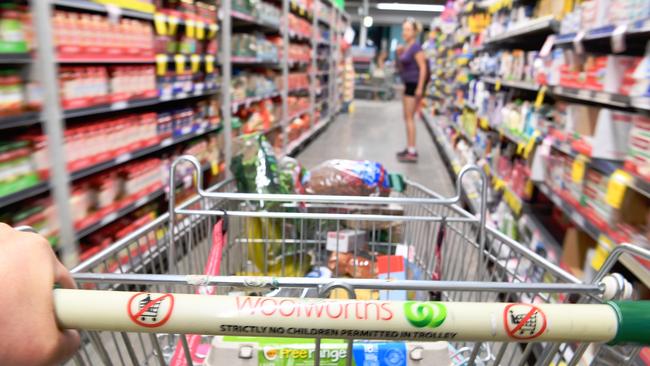
And those US indicators contributed to the rush to buy Australian dollars after the Federal Reserve pronouncement that future US interest rate rises might be moderated in the light of the economic buckling.
Rightly or wrongly, the market thinks we will need more interest rate rise “medicine” to create the equivalent blows.
Paradoxically, a higher Australian dollar will help our inflation by reducing import costs.
Like the US, around Australia lower-income people – often saddled with big mortgages – are already being hit with the equivalent of a massive pay cut, which will transform the landscape of parts of the Australian retail industry.
The first clues as to how this will play out come from what is happening on the US retail scene.
But remember, consumers in both Australia and the US are divided into two broad groupings – those in the front line of the blows being rained on the economy by the central banks and those that are cashed up and are not changing their spending patterns.
In Australia, like the US, rising prices have been concentrated in non-discretionary items where inflation in these goods and services has reached a sickening 7.6 per cent compared to only four per cent for discretionary items.
Most lower-income households spend a greater share of their income on non-discretionary items and struggle to reduce consumption because these items include food, fuel and housing.
The US central bank squeeze is further advanced than Australia and the latest 0.75 per cent rate rise was well signalled.
US households are not burdened with the consequences of Australia’s recent bank-lending spree at flexible interest rates, so I think we may follow the US buckling at a faster pace than the market expects.
Fascinatingly, some of the big US brands like Coca-Cola, Dove shampoo, Huggies diapers and Big Macs have been raising prices as their costs increase.
So far, demand has not fallen markedly although retailers are reporting a swing to lower priced house brands.
The big brands will try to pass on costs in Australia, but in both countries they will need to be very careful because the Federal Reserve’s earlier interest rate rises have already hit many US retailers.
The latest interest rate rise will compound that impact.
Profits of major US retailers like Walmart and Target have been slashed by lower demand from consumers buying discretionary items such as small appliances.
Amazon’s online retail growth has virtually stopped.
In Australia, the share market has discounted retail shares in anticipation of a similar event but, as the 2021-22 profits are showing, trading has remained strong in most retail operations.
The US retail decline is creating a stock problem, which will be duplicated in Australia by those retailers who become impacted by the squeeze on low-income earners.
In past years, major US retailers operated their business on a “just in time” basis so that stocks were kept to a minimum.
But the interruptions to supply from China, including the shipping difficulties, caused many items to disappear from the shelves.
And so the retailers have been building up their stock levels to be more independent from China.
The downturn in demand has caught them on the wrong foot.
US retail giant Walmart had to cut prices at its stores to reduce excess inventory and others are starting to follow.
Target slashed its profit forecast for the second quarter because it had too much merchandise in its warehouses.
That’s good for inflation, but the overstocking has caused a big increase in the need for warehouse space in the US.
Some say that the amount of stock being warehoused in the US has risen by about 20 per cent and is creating severe shortages of warehouse capacity.
In turn, the costs of storing stock are rising sharply and the latest interest rate rise will further lift the costs of storing excess stock.
The inevitable stock liquidation sales are going to create significant falls in prices.
In both Australia and the US, the desire to carry extra stock and the growth of online retailing has exploded the value of industrial land and warehouses.
Owners are now looking at their contracts to maximise rent increases to maintain values in the higher interest rate environment.
Australia retailers are still enjoying strong demand and that will continue for those with affluent customers.
But those with cash-poor customers and/or those whose income is falling in real terms will experience a US style cutback in spending on non-discretionary items.
They will also minimise their spending on essentials.
But Coke and McDonald’s in Australia will be hoping Down Under consumers will follow the early trends set by their US counterparts.




Parts of the US economy are now starting to buckle, which provides a clear preview of what is ahead for Australia.